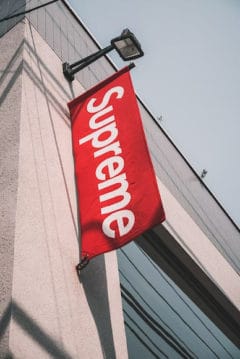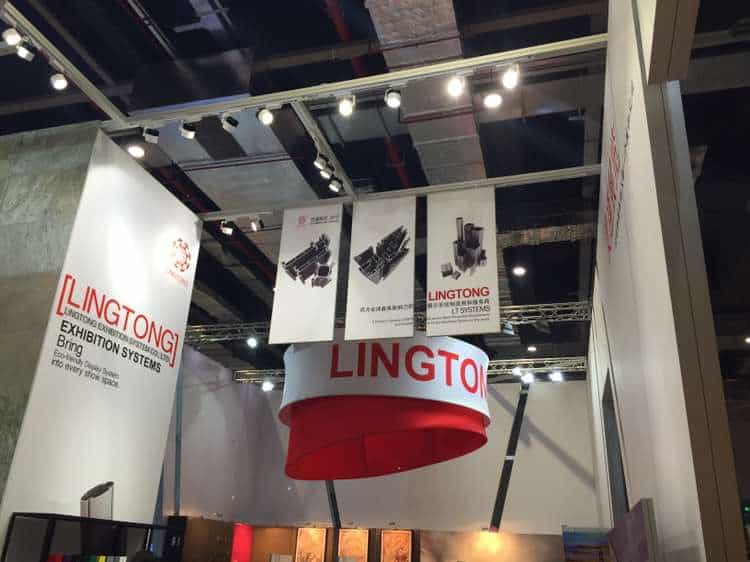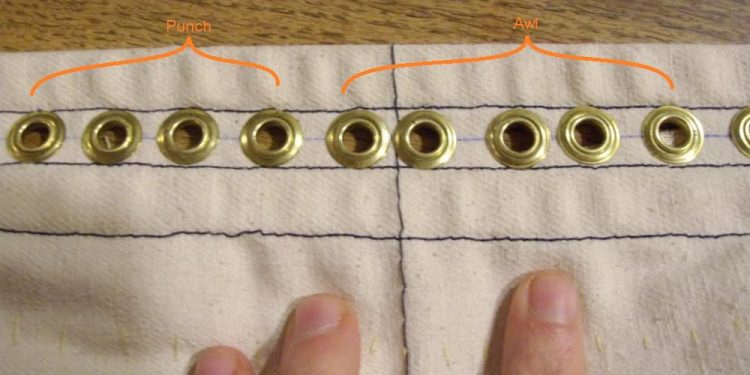Custom flag printing has become an increasingly popular way for businesses or organizations to promote their corporate logos, events, and more.
With the ability to personalize flags with custom designs, logos, and colors, flag printing has taken marketing to new heights. In this article, we will explore everything you need to know about custom flag printing, including the different printing options, materials, sizes, hanging options, and cost. So, let’s dive in and discover how you can make the most out of your custom flag printing needs.
Personalized Flag Printing
Personalized flag printing starts by designing your firm’s customized flags with unique designs, logos, and colors. Flag printing is a process that utilizes a high-quality printing process, called dye-sublimation printing, that ensures vibrant colors and crisp, photographic images, using digital printing and heat/pressure to embed the colors into your flags. The printing options for personalized flags include single-sided or double-sided printing, and the flags can be made from premium UV resistant materials that are durable and long-lasting, up to a year out of doors.
Take Your Marketing to New Heights with Custom Banner Flag Printing
So, as we discussed above, custom flag printing is a process that allows you to create your own custom flags. You can choose from a variety of different materials, sizes and shapes as well as customize the design in any way you’d like. This makes them perfect for companies trying to make their brand stand out from competitors’ products or services because they’ll be able to create something unique that no one else has access too!
Can You Print a Custom Flag?
Yes, it is possible for you to print a custom flag – if you can spend $50-100K on equipment that is intended for printing custom flags and banners – and hire a couple full time employees with experience dye-sub printing. Otherwise, custom flag printing companies allow you to create your own unique design, logo, and colors, then print your flags, cost effectively. The dye-sublimation printing process ensures that the colors are vibrant and the images are crisp.
What Type of Printing is Used for Flags?
 There are several types of printing methods that can be used for flags. The three most popular methods are silk screening, digital printing, and dye sublimated printing. Silk screening, also known as screen printing, involves applying ink to a stencil, or screen, that is then pressed onto the flag material. Digital printing uses a computerized inkjet printer to apply ink directly onto the flag material – also known as DTS, or direct-to-substrate printing.
There are several types of printing methods that can be used for flags. The three most popular methods are silk screening, digital printing, and dye sublimated printing. Silk screening, also known as screen printing, involves applying ink to a stencil, or screen, that is then pressed onto the flag material. Digital printing uses a computerized inkjet printer to apply ink directly onto the flag material – also known as DTS, or direct-to-substrate printing.
Dye sublimation is a process in which CYMO dyes are digitally printed to a transfer paper, then “married” to a polymer based fabric (polyester or nylon), then fed through heated rollers at about 400psi at 400°F, which converts the heated dye to a gas, enfusing the gas into the heat-opened cells of the fabric, creating a picture-perfect photo quality print on your flags/banners. This method produces vivid colors that will remain sharp and vibrant even after multiple uses. Note: Dye sublimation printed custom flags typically need replaced within 6 to 12 months if hung out-of-doors.
Printing Options
When it comes to custom flags, there are two options for printing: single sided or double sided.
Single Sided: Single sided flags have the design printed on one side of the flag, while the backside of the flag is left blank.. This option is ideal for flags that are mounted on a wall or used in parades where only one side of the flag will be visible.
Double Sided: Double sided flags, on the other hand, have the design printed on both sides of the flag, with a blockout material layer between the two sides to prevent the image from being visible through one side to the other. This option is great for flags that will be flown outdoors on a flagpole or in areas where both sides of the flag will be visible. While double sided printing is more expensive than single sided printing, it can add a more professional and polished look to the flag.
What is the Best Material for a Custom Flag?
When it comes to choosing the best material for a custom flag, there are several options available including cotton, nylon, and polyester.
Cotton: Cotton is a natural, soft material that displays rich, true colors, making it well-suited for traditional ceremonies and indoor displays. However, cotton is not as durable in wet conditions as nylon and polyester, nor are natural fibers able to be dye sublimation printed.
Nylon: Nylon is strong, flies well, and resists mildew, making it a popular choice for homeowners who want to display their patriotic or garden/porch flags.
Polyester: Polyester is typically the number one choice for custom flags, due to the variety of polyester fabrics, from satins to knits to sheers, making it used more the other fabric options listed. In summary, the best material for a custom flag depends on the specific needs and intended use of the flag, but polyester is, in our opinion, the most favorable option.
What is the Custom and Standard Flag Size for Printing?
 The custom size can vary greatly depending on the specific needs of the customer. Some custom flags may be as small as 6 inches by 4 inches, while others may be as large as 30 feet by 60 feet. The size of a custom flag is often determined by the intended use of the flag and the location where it will be displayed.
The custom size can vary greatly depending on the specific needs of the customer. Some custom flags may be as small as 6 inches by 4 inches, while others may be as large as 30 feet by 60 feet. The size of a custom flag is often determined by the intended use of the flag and the location where it will be displayed.
The standard size typically ranges from 12 inches by 18 inches to 5 feet by 8 feet. The most common size for residential displays is 3 feet by 5 feet. The latter size of flag is typically hung from a flag pole bracket on the porch. The pole itself is typically 6-8ft in height. Some homeowners want a flag pole to fly their colors. These poles are typically 20-25ft tall, with about 2 feet embedded in concrete. Taller poles are available, and these poles use heavier guage aluminum and can fly larger flags. If you are a homeowner, you must check with your municipality for residential area flagpole height regulations.
How Long Does it take to Print a Custom Flag?
The time it takes to print a custom flag can vary depending on the complexity of the design and the quantity of flags ordered. Typically, it takes anywhere from 5-10 business days for a custom flag to be printed and shipped. Rush orders with expedited shipping options are available for an additional fee. Ultimately, it will depend on the custom flag maker you have chosen to print your personalized flag.
How Much Does It Cost to Print a Custom Flag?
The cost of printing a custom flag can vary depending on several factors, including the size, complexity of the design, and the quantity of flags ordered. As we’re talking about custom flags, pricing is also done by quote as these flags are not sold “off the shelf” as a US flag would be. It’s always best to obtain a quote from a reputable flag printing company to get an accurate estimate for your specific needs.
Choosing the right Hanging Options
Choosing the right hanging options is an important part of your custom banner flag printing process.
 Grommets: If you’re looking to hang your banner flag on a metal pole, we recommend using grommets. These are small metal rings that can be inserted into the hanging edge of your banner flag, then secured with screws or other fasteners.
Grommets: If you’re looking to hang your banner flag on a metal pole, we recommend using grommets. These are small metal rings that can be inserted into the hanging edge of your banner flag, then secured with screws or other fasteners.
Pole Pockets: If you want to use a wooden dowel, PVC pipe, or metal – such as conduit or aluminum – or plastic rods, we recommend using pole pockets instead of grommets. Pole pockets are typically sewn into one or both sides (or top and bottom) of your banner so they fit somewhat loosely around whichever type of rod you choose to display it on.
Other common hanging options include rope loops attached onto each each corner or the two upper corners,or by use of Velcro® tabs attached at regular intervals along one side; etc. Their are several ways to do it and many not mentioned here.
Custom Flag Care
Proper care and maintenance of a custom polyester flag or banner can help extend its lifespan and keep it looking vibrant. Avoid exposing the flag to sunlight insofar as possible. When not in use, store the flag in a cool, dry place away from direct sunlight. If the flag becomes dirty, you can machine wash it on a gentle cycle with a mild detergent and cold or warm water. Do not use bleach or harsh cleaning agents, as these can damage the fabric and colors. Finally, make sure to hang your flag until completely dry, and properly fold and store the flag after each use to prevent creases and wrinkles.
Conclusion
Custom flag printing is an excellent way to showcase your brand, organization, or personal style. With a wide range of sizes, materials, and printing options available, it’s easy to create a unique flag that stands out from the crowd. Proper care and maintenance can help extend the lifespan of your flag. While the cost of printing a custom flag can vary depending on several factors, such as size and design complexity, it’s always best to obtain a quote from a reputable flag printing company to get an accurate estimate for your specific needs.
Popular Posts:




